Kansas Settlers
In 1854, during the debate on the Kansas-Nebraska Act, people across the country began to prepare for emigrating to the soon-to-be opened Kansas Territory.
The New England Emigrant Aid Company (originally called the Massachusetts Emigrant Aid Company) was founded by Eli Thayer in March of 1854. Its goal for to finance settlers from the north who were willing to emigrate to Kansas and support the free state cause. Amos A. Lawrence began serving as the organization's treasurer. Although there was a tremendous amount of publicity surrounding the organization, Lawrence would continually struggle to raise sufficient funds and would end up contributing large sums of his own wealth to the cause. Before the end of 1854, the New England Emigrant Aid Company had financed several parties of emigrants for a total of around 450 settlers. In spring of 1855, another 800 or so would follow.
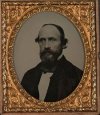
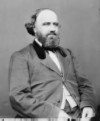 Among the first settlers were the company's agents in Kansas, Charles Robinson and Samuel Pomeroy. They settled on the high ground (present day Mount Oread) between the Kansas and Wakarusa Rivers in northeastern Kansas. They would name the new town, Lawrence, after Amos A. Lawrence, their benefactor. Other prominent free-state settlements would be established in Osawatomie and Mound City, Kansas. The Reverend Samuel Adair and several of the sons of John Brown would make Osawatomie their home. James Montgomery and later Charles Jennison would settle in Mound City, Kansas.
Among the first settlers were the company's agents in Kansas, Charles Robinson and Samuel Pomeroy. They settled on the high ground (present day Mount Oread) between the Kansas and Wakarusa Rivers in northeastern Kansas. They would name the new town, Lawrence, after Amos A. Lawrence, their benefactor. Other prominent free-state settlements would be established in Osawatomie and Mound City, Kansas. The Reverend Samuel Adair and several of the sons of John Brown would make Osawatomie their home. James Montgomery and later Charles Jennison would settle in Mound City, Kansas.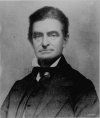
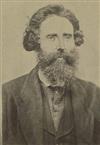
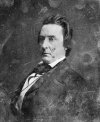 The widespread publicity that the New England Emigrant Aid Company had $5 million to finance 20,000 free state emigrants for Kansas raised the alarms in the south and particularly in the bordering slave state of Missouri. Senator David Rice Atchison, in particular, would sound the call for Missourians to cross the border and file claims on land in the Kansas Territory.
The widespread publicity that the New England Emigrant Aid Company had $5 million to finance 20,000 free state emigrants for Kansas raised the alarms in the south and particularly in the bordering slave state of Missouri. Senator David Rice Atchison, in particular, would sound the call for Missourians to cross the border and file claims on land in the Kansas Territory.
In June of 1854, a group of Missourians organized what they called the Squatters' Claim Association. They passed several resolutions:
“That we will afford protection to no abolitionist as settler of Kansas Territory.”
“That we recognize the institution of Slavery as already existing in this Territory, and recommend to Slaveholders to introduce their property as early as practicable.”
“That this association will, whenever called upon by any of the citizens of Kansas Territory, hold itself in readiness together to assist and remove any and all emigrants who go there under the auspices of The Emigrant Aid Societies.”
Free-state settlers would respond in August by forming the Actual Settlers' Association of Kansas Territory which would meet and adopt resolutions to counter those of the pro-slavery Squatters' Claim Association.
In the Atchison pro-slavery newspaper, The Squatter Sovereign, John Stringfellow published the following missive against free soilers:
“We can tell the impertinent scoundrels of the [New York] Tribune that they may exhaust an ocean of ink, their Emigrant Aid Societies spend their millions and billions, their representatives in Congress spout their heretical theories until doomsday, and his excellency Franklin Pierce appoint abolitionist after free soiler as governor, yet we will continue to tar and feather, drown, lynch, and hang every white-livered abolitionist who dares to pollute our soil.”
 During 1855, pro-slavery supporters in Missouri began using force to stop emigration by free-state supporters to Kansas via the Missouri River. In response, James Henry Lane worked to develop a northern route through Iowa and Nebraska The route would become known as The Lane Trail. To provide sanctuaries along the trail, Lane directed the establishment of fortified log cabins along the trail.
During 1855, pro-slavery supporters in Missouri began using force to stop emigration by free-state supporters to Kansas via the Missouri River. In response, James Henry Lane worked to develop a northern route through Iowa and Nebraska The route would become known as The Lane Trail. To provide sanctuaries along the trail, Lane directed the establishment of fortified log cabins along the trail.
Settlers would continue to emigrate to Kansas. By the end of the 1850s, many more free-state supporters would have arrived than would pro-slavery supporters. On October 4, 1859, Kansas voters approved the Wyandotte Constitution by a 2-to-1 margin. It was a free-state constitution banning slavery. The territorial legislature submitted their request to be admitted to the Union under this constitution. While the US House of Representatives passed a bill to admit Kansas as a free-state, the US Senate would not be able to pass the bill until January 21, 1861. On January 29, 1861, Kansas became the 34th state to enter the Union.
Back: Bleeding Kansas: Prologue
Next: The Players
